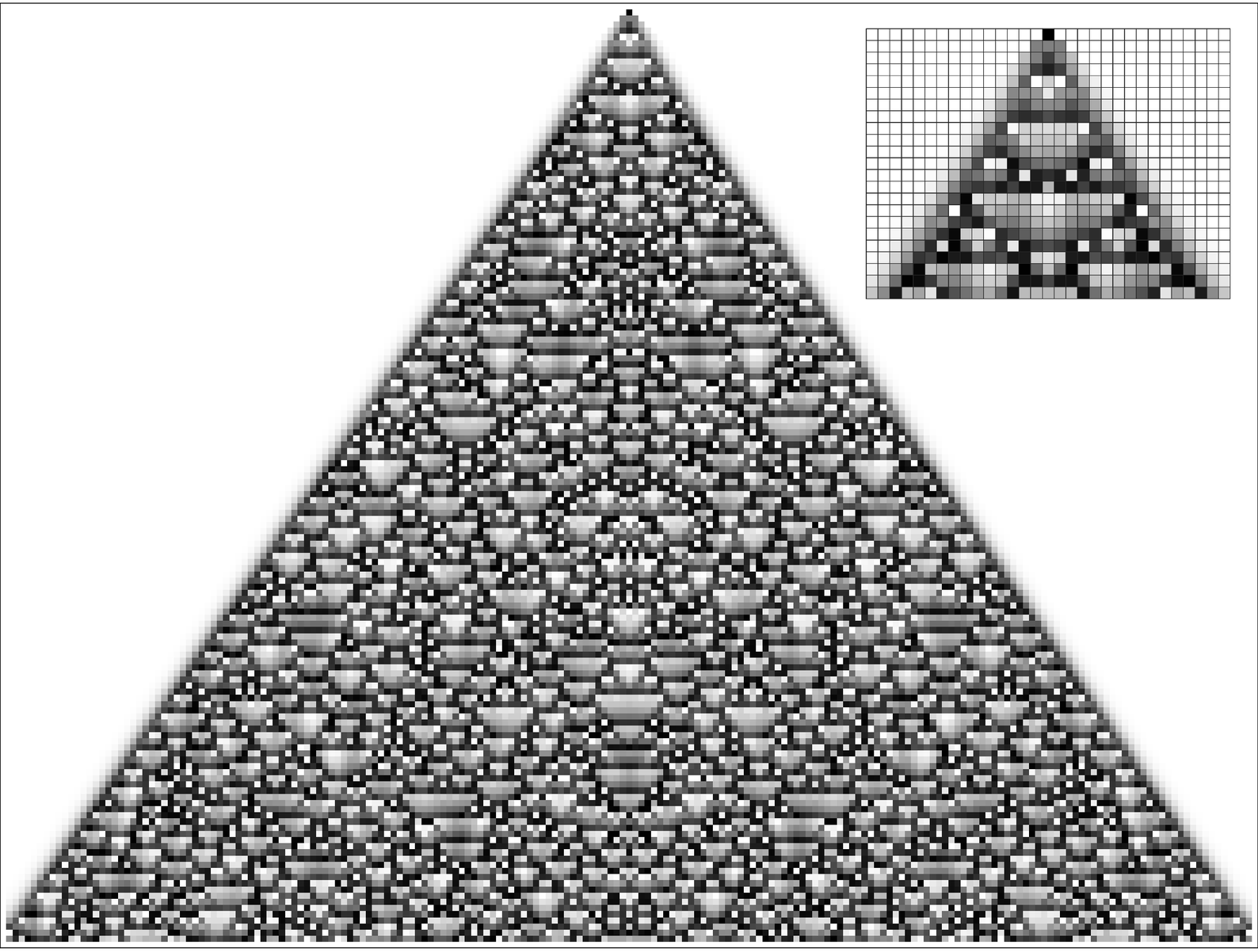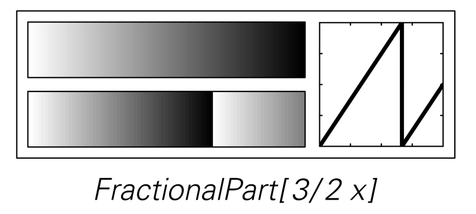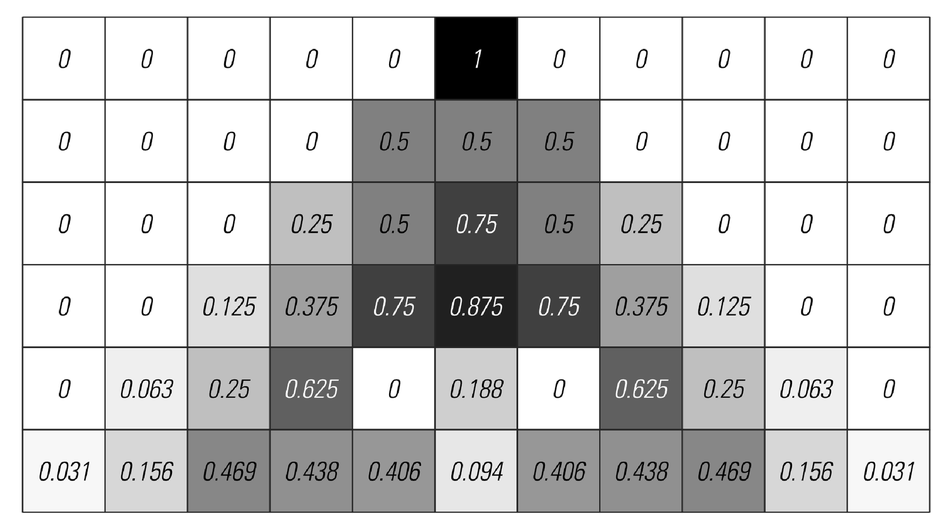And what we see is that despite the presence of continuous gray levels, the behavior that is produced exhibits the same kind of complexity that we have seen in many ordinary cellular automata and other systems with discrete underlying elements.

 |  |
A continuous cellular automaton with a slightly more complicated rule. The rule takes the new gray level of each cell to be the fractional part of the average gray level of the cell and its neighbors multiplied by 3/2. The picture shows that starting from a single black cell, this rule yields behavior of considerable complexity. Note that the operation performed on individual average gray levels is exactly iterated map (a) from page 150.



